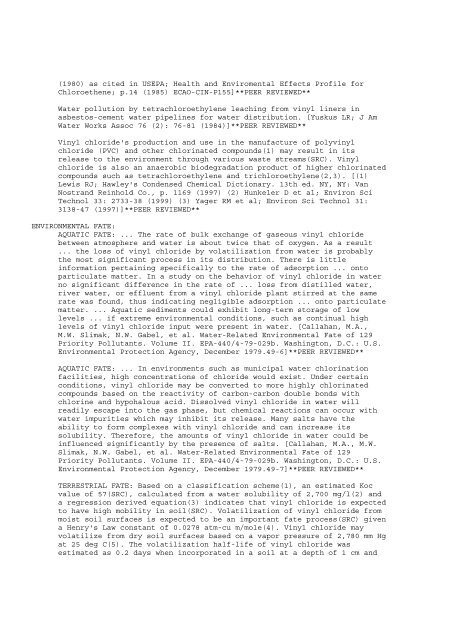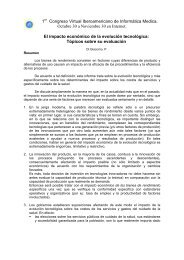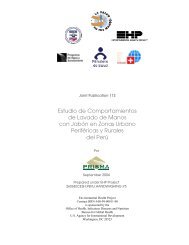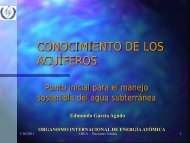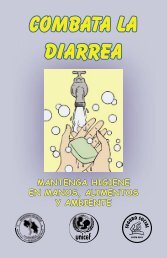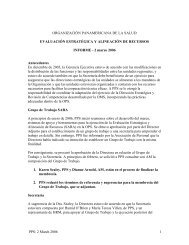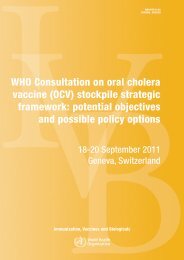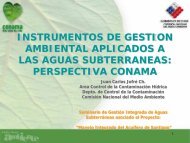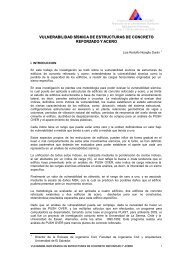a database of the National Library of M
a database of the National Library of M
a database of the National Library of M
You also want an ePaper? Increase the reach of your titles
YUMPU automatically turns print PDFs into web optimized ePapers that Google loves.
(1980) as cited in USEPA; Health and Enviromental Effects Pr<strong>of</strong>ile forChloroe<strong>the</strong>ne; p.14 (1985) ECAO-CIN-P155]**PEER REVIEWED**Water pollution by tetrachloroethylene leaching from vinyl liners inasbestos-cement water pipelines for water distribution. [Yuskus LR; J AmWater Works Assoc 76 (2): 76-81 (1984)]**PEER REVIEWED**Vinyl chloride's production and use in <strong>the</strong> manufacture <strong>of</strong> polyvinylchloride (PVC) and o<strong>the</strong>r chlorinated compounds(1) may result in itsrelease to <strong>the</strong> environment through various waste streams(SRC). Vinylchloride is also an anaerobic biodegradation product <strong>of</strong> higher chlorinatedcompounds such as tetrachloroethylene and trichloroethylene(2,3). [(1)Lewis RJ; Hawley's Condensed Chemical Dictionary. 13th ed. NY, NY: VanNostrand Reinhold Co., p. 1169 (1997) (2) Hunkeler D et al; Environ SciTechnol 33: 2733-38 (1999) (3) Yager RM et al; Environ Sci Technol 31:3138-47 (1997)]**PEER REVIEWED**ENVIRONMENTAL FATE:AQUATIC FATE: ... The rate <strong>of</strong> bulk exchange <strong>of</strong> gaseous vinyl chloridebetween atmosphere and water is about twice that <strong>of</strong> oxygen. As a result... <strong>the</strong> loss <strong>of</strong> vinyl chloride by volatilization from water is probably<strong>the</strong> most significant process in its distribution. There is littleinformation pertaining specifically to <strong>the</strong> rate <strong>of</strong> adsorption ... ontoparticulate matter. In a study on <strong>the</strong> behavior <strong>of</strong> vinyl chloride in waterno significant difference in <strong>the</strong> rate <strong>of</strong> ... loss from distilled water,river water, or effluent from a vinyl chloride plant stirred at <strong>the</strong> samerate was found, thus indicating negligible adsorption ... onto particulatematter. ... Aquatic sediments could exhibit long-term storage <strong>of</strong> lowlevels ... if extreme environmental conditions, such as continual highlevels <strong>of</strong> vinyl chloride input were present in water. [Callahan, M.A.,M.W. Slimak, N.W. Gabel, et al. Water-Related Environmental Fate <strong>of</strong> 129Priority Pollutants. Volume II. EPA-440/4-79-029b. Washington, D.C.: U.S.Environmental Protection Agency, December 1979.49-6]**PEER REVIEWED**AQUATIC FATE: ... In environments such as municipal water chlorinationfacilities, high concentrations <strong>of</strong> chloride would exist. Under certainconditions, vinyl chloride may be converted to more highly chlorinatedcompounds based on <strong>the</strong> reactivity <strong>of</strong> carbon-carbon double bonds withchlorine and hypohalous acid. Dissolved vinyl chloride in water willreadily escape into <strong>the</strong> gas phase, but chemical reactions can occur withwater impurities which may inhibit its release. Many salts have <strong>the</strong>ability to form complexes with vinyl chloride and can increase itssolubility. Therefore, <strong>the</strong> amounts <strong>of</strong> vinyl chloride in water could beinfluenced significantly by <strong>the</strong> presence <strong>of</strong> salts. [Callahan, M.A., M.W.Slimak, N.W. Gabel, et al. Water-Related Environmental Fate <strong>of</strong> 129Priority Pollutants. Volume II. EPA-440/4-79-029b. Washington, D.C.: U.S.Environmental Protection Agency, December 1979.49-7]**PEER REVIEWED**TERRESTRIAL FATE: Based on a classification scheme(1), an estimated Kocvalue <strong>of</strong> 57(SRC), calculated from a water solubility <strong>of</strong> 2,700 mg/l(2) anda regression derived equation(3) indicates that vinyl chloride is expectedto have high mobility in soil(SRC). Volatilization <strong>of</strong> vinyl chloride frommoist soil surfaces is expected to be an important fate process(SRC) givena Henry's Law constant <strong>of</strong> 0.0278 atm-cu m/mole(4). Vinyl chloride mayvolatilize from dry soil surfaces based on a vapor pressure <strong>of</strong> 2,780 mm Hgat 25 deg C(5). The volatilization half-life <strong>of</strong> vinyl chloride wasestimated as 0.2 days when incorporated in a soil at a depth <strong>of</strong> 1 cm and


